Off-the-grid housing has become increasingly popular over the years because it’s cheaper, sustainable, and environmentally friendly. They’re self-sufficient and don’t need public utilities such as gas, electricity, and water. They can also be located in remote areas with limited access to essential services.
Nevertheless, despite the benefits of off-the-grid housing, there are also a number of challenges, and one way to manage them is by growing ivy around the house. There are pros and cons to growing ivy around off-the-grid housing which will be addressed in this article.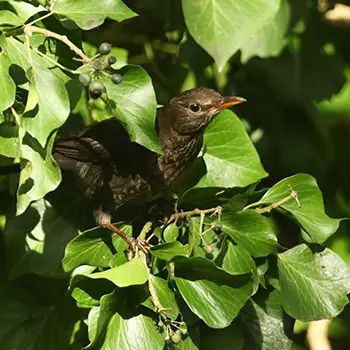
Wildlife Habitat: Ivy can provide nesting sites and shelter for birds and small animals. The flowers can attract butterflies and bees making it a more vibrant and diverse ecosystem.
Erosion Control: Growing ivy around your off-the-grid house can help prevent soil erosion because the roots help stabilize the soil preventing it from washing away during strong winds or heavy rain. This can be especially beneficial if your off-the-grid house is located in an area with unstable soil or on a slope.
Low Maintenance: Ivy is a low-maintenance plant; once established, it grows fast and covers large areas reducing the need for mowing and weeding.
Related: Off-Grid Homesteading VS. Prepping
Aesthetically Pleasing: Ivy can be an attractive addition to your off-the-grid house, adding a touch of beauty and greenery to your surroundings. The foliage of ivy provides a nice backdrop to your house and can help it blend in with the natural environment. Ivy can also be grown in a variety of ways, such as on trellises or as ground cover, allowing you to create different designs and patterns.
Improves Air Quality: Plants absorb carbon dioxide and release oxygen which help create a healthier living environment. Ivy can also absorb pollutants such as xylene, formaldehyde, and benzene which are found in household items such as cleaning products, furniture, and carpets.
Natural Insulation: The dense foliage of ivy acts as a natural insulator by trapping air and creating a layer of insulation that helps keep the house warm and reduces the need for heating systems which saves you money on energy costs.
The Challenges With Growing Ivy Around Off-the-Grid Housing
Although growing ivy around your off-the-grid house has several benefits, there are also a number of challenges you might need to consider. Here are some of them:
Allergies: Before growing ivy around your off-grid housing, get the all-clear from your doctors to ensure you or your family members are not allergic to ivy. For those who are allergic to it, it can cause respiratory and skin problems.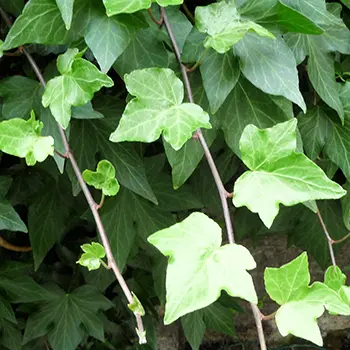
Maintenance Requirements: As mentioned, ivy is low maintenance; however, it does need maintenance to prevent it from overgrowing and causing damage to the house. You’ll need to prune regularly and remove dead branches and leaves and ensure it doesn’t interfere with any structures or utilities on your property.
Related: Survival Foods You Need To Forage This Spring
Increased Fire Risk: If you live in an area with a high risk of wildfires, growing ivy around your off-grid house won’t be a good idea. When the weather is dry, ivy can be highly flammable. To reduce the risk of fire, keep the ivy trimmed and away from potential ignition sources such as chimneys or power lines.
Structural Damage: When ivy attaches itself to the walls of your house, it can cause structural damage when the roots penetrate into crevices and cracks. This can be especially problematic if your off-the-grid housing is made from vulnerable materials such as wood. Therefore, it’s important to keep an eye on the growth of your ivy and fix any problems immediately if it starts causing damage.
How to Grow Ivy
Here are some tips on how to grow ivy around your off-the-grid housing:
Choose Your Ivy: Ivy comes in different varieties and some are better suited to your climate soil than others.
For example: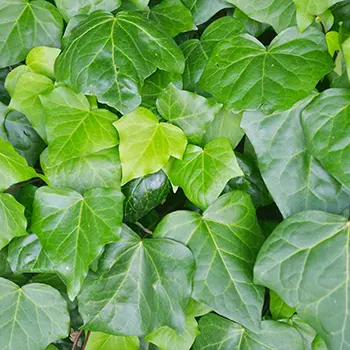
- English Ivy: Known for its versatility and hardiness, English ivy is one of the most popular types of ivy because it can grow in a variety of conditions.
- Algerian Ivy: This ivy is known for its large glossy leaves and is often used as an ornamental plant to cover fences and walls.
- Japanese Ivy: Known for its small rounded leaves, Japanese ivy is typically used to cover walls or fences as a ground cover.
- Persian Ivy: Persian ivy is native to Iran and is known for its large heart-shaped leaves. It is often used as an ornamental plant in gardens or to cover fences or walls.
- Irish Ivy: Irish ivy is similar to English ivy but has larger leaves, and is more cold and hardy.
Choose the Right Location: Ivy thrives in areas that get full to partial shade with well-drained soil. Choose a location exposed to regular rainfall and that is sheltered from strong winds.
Related: 13 Plants That Thrive In Shade
Prepare the Soil: Prepare the soil by removing debris, or weeds and loosening the soil. Add organic matter such as aged manure or compost to improve its fertility.
Plant the Ivy: Plant the ivy in the prepared soil, spacing the plants approximately 12-18 inches apart. After planting, water the ivy thoroughly and mulch around the base to prevent weed growth and retain moisture.
Provide Support: So that the ivy can climb up the walls of your house, provide support with a structure such as a wire mesh or a trellis.
Prune Often: As mentioned, ivy grows fast; therefore, it requires regular maintenance to ensure it doesn’t overgrow. Trim back any damaged leaves or branches, and remove any growth that’s interfering with the structures or utilities on your property.
Monitor Growth: Pay attention to how the ivy grows around your house and take the required action if it starts causing damage to your property.
Final Thoughts
As you’ve read, there are several benefits to growing ivy around your off-the-grid housing, but it’s also important to be aware of the potential problems and take the appropriate precautions so that you can enjoy all that ivy has to offer without putting your property at risk.
You may also like:
The Forager’s Guide To Wild Foods: Book Review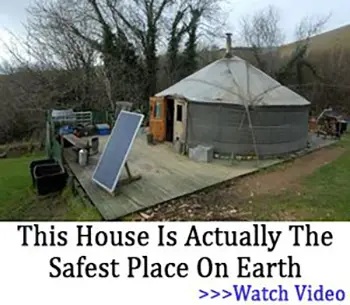
If You See This Plant in Your Backyard, Burn It Immediately! (Video)

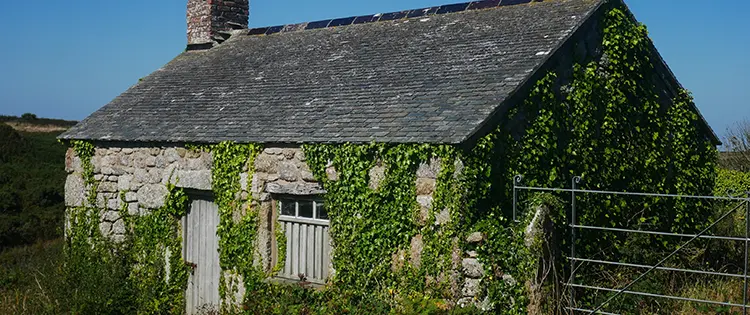








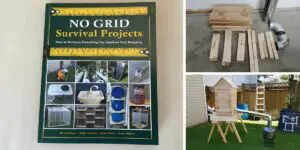




if you want your building to deteriorate and “return to nature”, then by all means allow ivy (or any other invasive, penetrating vegetation) to grow and ruin the structural integrity of the building.